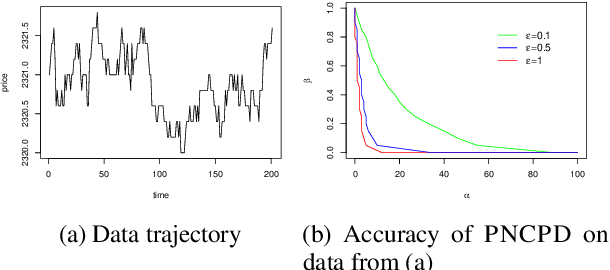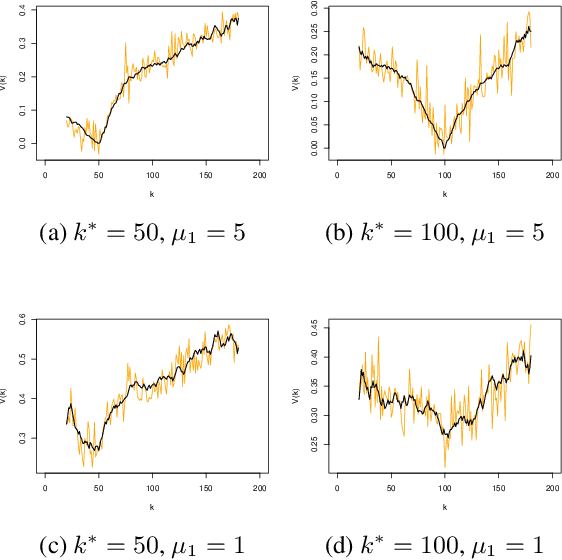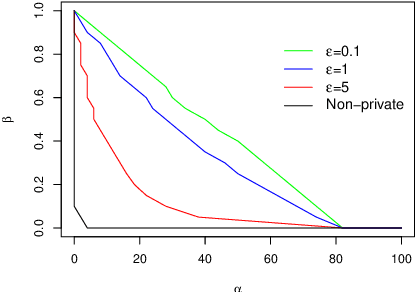Sara Krehbiel
Privately detecting changes in unknown distributions
Oct 03, 2019


Abstract:The change-point detection problem seeks to identify distributional changes in streams of data. Increasingly, tools for change-point detection are applied in settings where data may be highly sensitive and formal privacy guarantees are required, such as identifying disease outbreaks based on hospital records, or IoT devices detecting activity within a home. Differential privacy has emerged as a powerful technique for enabling data analysis while preventing information leakage about individuals. Much of the prior work on change-point detection (including the only private algorithms for this problem) requires complete knowledge of the pre-change and post-change distributions. However, this assumption is not realistic for many practical applications of interest. This work develops differentially private algorithms for solving the change-point problem when the data distributions are unknown. Additionally, the data may be sampled from distributions that change smoothly over time, rather than fixed pre-change and post-change distributions. We apply our algorithms to detect changes in the linear trends of such data streams.
Differentially Private Change-Point Detection
Aug 29, 2018

Abstract:The change-point detection problem seeks to identify distributional changes at an unknown change-point k* in a stream of data. This problem appears in many important practical settings involving personal data, including biosurveillance, fault detection, finance, signal detection, and security systems. The field of differential privacy offers data analysis tools that provide powerful worst-case privacy guarantees. We study the statistical problem of change-point detection through the lens of differential privacy. We give private algorithms for both online and offline change-point detection, analyze these algorithms theoretically, and provide empirical validation of our results.
 Add to Chrome
Add to Chrome Add to Firefox
Add to Firefox Add to Edge
Add to Edge